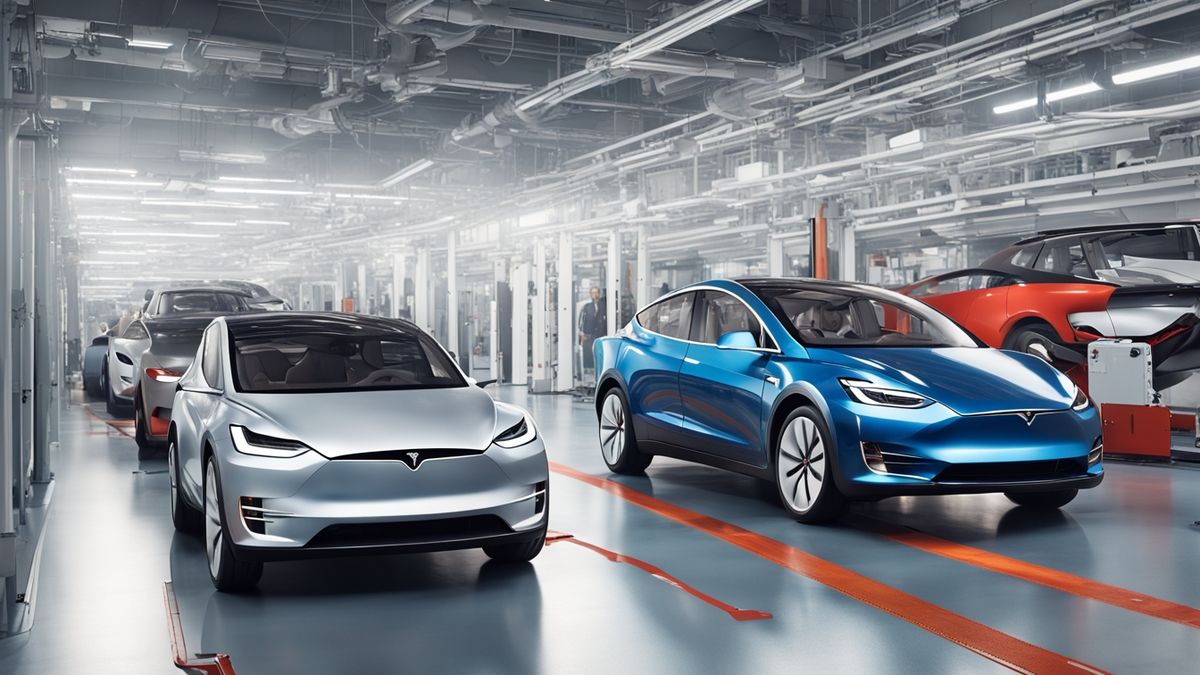
As dawn breaks over the automotive industry, a silent revolution gathers pace. Major car manufacturers globally are not just embracing electric propulsion; they’re betting their future on it. From BMW’s ambitious target of 2 million fully electric vehicles by 2025 to Ford’s groundbreaking venture with the F-150 Lightning, the race towards a cleaner, greener world is on. Companies like General Motors are not far behind, with plans to eliminate gas and diesel vehicles by 2035, underscoring an industry-wide commitment to change. Meanwhile, the automotive switch market, a critical segment in this transformation, is projected to see significant growth from 2023 to 2030, driven by the surge in demand for electrical systems and components. This narrative explores the pivotal shift towards vehicle electrification and its profound impact on the automotive landscape.
Accelerating Towards a Greener Tomorrow
The push for vehicle electrification is more than just an environmental statement; it’s a strategic realignment of the automotive industry’s core. As traditional car manufacturers pivot towards electric vehicles (EVs), the demand for specialized components like fuel cells, batteries, and electric motors skyrockets. This shift is not without its challenges, particularly in manufacturing high-precision components such as bipolar plates and battery boxes, which are crucial for the performance and reliability of EVs. However, innovations like the FastComponentWelding (FCW) technology offer a beacon of hope, promising to enhance productivity and welding quality for these critical parts. This technological advancement is not just a win for manufacturers but a significant stride towards a sustainable automotive ecosystem.
The Driving Forces Behind the Shift
The transition to electric propulsion is fuelled by a combination of advancements in vehicle technology, stringent safety regulations, and a growing consumer demand for greener transportation options. Automotive switches, the unsung heroes of vehicle functionality, controlling everything from lights and wipers to HVAC systems, are undergoing a transformation. The rise of electric and hybrid vehicles necessitates the development of specialized switches for electric drivetrains and advanced driver-assistance systems (ADAS), further propelling the automotive switch market’s growth. Key industry players like Robert Bosch GmbH and Continental AG are at the forefront of this innovation, focusing on creating sophisticated, user-friendly switches that enhance the driving experience while promoting vehicle safety and efficiency.
Looking Ahead: The Road to 2030
As we gaze into the future, the automotive industry’s landscape appears dramatically different, shaped by the relentless drive towards electrification. By 2030, the market for automotive switches is expected to burgeon, reflecting the increasing integration of electric vehicles into the global fleet. This growth is not just a testament to the industry’s adaptability but also to its commitment to forging a sustainable path forward. The challenges of transitioning to electric propulsion are manifold, but the potential benefits—reduced emissions, enhanced energy efficiency, and a cleaner environment—are too significant to ignore. With each electric vehicle rolling off the production line, the industry takes another step towards realizing its vision of a greener, more sustainable future.
In conclusion, the shift towards vehicle electrification represents a pivotal moment in the automotive industry’s history. With major manufacturers setting ambitious targets and the automotive switch market poised for significant growth, the race towards a cleaner, greener future is well underway. This transformation, driven by technological advancements, stringent safety regulations, and changing consumer preferences, holds the promise of a sustainable automotive ecosystem for generations to come.
